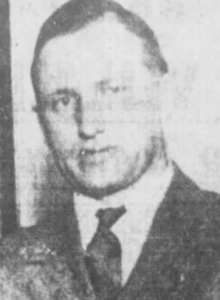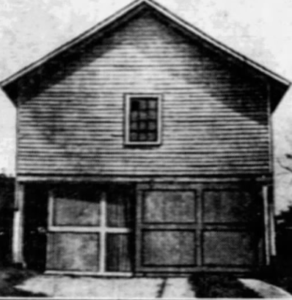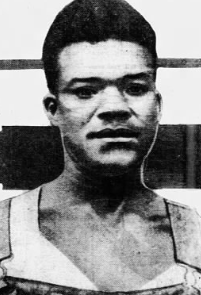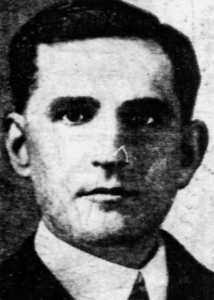09 Jan Historical Fiction: Who Shot the Sheriff?
Subplot for Rising Above It
I recently came across one of Greenville, South Carolina’s most fascinating murder cases while reading digital copies of The Greenville News from 1929-1930. The case was so compelling, I decided to weave it into the plot of my new novel, Rising Above It, set at the beginning of the Great Depression, and during the Prohibition Era.
Sam Willis Murder Case

Sheriff Sam Willis

Site of Willis Murder
Shortly after midnight, on June 11, 1927, Greenville County Sheriff Sam Willis, 36, was gunned down outside his garage, after returning to his home on Stone Avenue.
A popular local figure, Willis had served with distinction in the Butler Guards in Mexico and then again during World War I, where he earned the rank of captain when his unit was sent to France to help dismantle the Hindenburg Line.
After hearing the gunshots, a large crowd had gathered outside the home prior to the arrival of the police and sheriff’s deputies. They trampled much of the evidence.
Ethel Willis, the wife of the slain sheriff, reported seeing a black man walk past the house just after the gunshots rang out. Talk of lynching prompted Governor John Richards to call out the Butler Guards to prevent mob violence.
The murder caused an uproar among the citizens of Greenville. The following Sunday, The heinous crime was decried from every pulpit. The leading editorial in The Greenville News concluded:
Lawlessness and crime must be shown that it cannot dominate and terrorize this community. No cost is too great to bring a stern and terrible rebuke to those who would trample in the mire the standards of justice and righteousness.
The next day the governor put W.W. Rogers, state constable, in charge of the investigation, and released five state detectives to work with him and the Greenville police in solving the murder. Among the state detectives chosen was Carlos Rector, whom Richards later picked to serve out Willis’s unexpired term as sheriff.
Rector had defeated Willis in the 1920 sheriff’s election and had subsequently been defeated by Willis in 1924. Ironically, Willis had been serving out the term of Carlos Rector’s brother Hendrix, who was shot to death in his second term as sheriff, as a result of an old feud with Jake Gosnell, deputy collector of internal revenue, whose was based in Greenville.
Illicit Affair
The investigators followed their theory that a liquor ring had hired a hitman to kill Willis, in retaliation for his aggressive campaign to destroy whiskey stills and arrest violators of the prohibition laws. They brought in several suspects known to be involved with illegal alcohol. However, each one had an alibi for the time of the murder and had to be released.
They turned next to local rumors buzzing about the community that the murder had been motivated by scandal and betrayal.
After numerous attempts to corroborate the rumors, they concluded that Willis’s widow, Ethel, and his best friend and deputy, Henry Townsend, were having an affair; that the two had been caught together in the garage when the sheriff returned home; and, that Townsend had shot his friend while trying to get away.
Townsend was arrested and taken under cover of darkness to the state penitentiary in Columbia for safekeeping on June 14, a week after Rector was sworn in as sheriff. Mrs. Willis was later arrested and the two were indicted by a grand jury.
The trial began on August 25. It lasted for two weeks, the longest in Greenville County history to that date. Spectators crowded into the the courtroom to witness the unfolding drama–the indicted widow of the sheriff, in heavily veiled mourning attire, dabbing her eyes with a handkerchief as she sat surrounded by her young daughters and her slain husband’s mother; the wife and siblings of Henry Townsend, the sheriff’s best friend and war buddy, rallying to his support. All over Greenville, talk of the trial consumed conversation and halted business, to the extent that local merchants banned their store clerks from discussing the trial with customers.
The prosecution by the state, led by solicitor J.C. Leatherwood, based its case on an implied affair between Ethel Willis and Henry Townsend, citing witnesses who had seen them kissing at the wake, only feet away from the corpse; that Mrs. Willis had called Townsend after the murder; and, that the two had been seen in compromising situations before and after the murder.
Leatherwood and his team argued that Sam Willis had returned home to find the two together, that the couple had conspired to kill him, and carried out the act when he surprisedly came home. There had been mention as well that Willis had seemed troubled in the weeks leading up to the murder–that he’d appeared distant toward Townsend, and he’d even said someone would kill him.
The defense argued that there was no hard evidence and that the prosecutor’s case was based on speculation and not fact. They could not prove conclusively that the gun linked to the killing belonged to either Ethel Willis or Townsend.
When the judge dismissed the jury after the closing arguments, they returned within an hour with a verdict of not-guilty. As the couple left the courtroom, they thanked the jury for freeing them so that they could go out and help find the real murderer. Ethel Willis pledged that, despite her ordeal, she would continue to make Greenville her home and would enroll her children in the local school system.
Bramlett Vows to Find the Real Killer
When he became sheriff, Carlos Rector had called for the resignation of all of Willis’s deputies, with the exception of Cliff Bramlett. Bramlett, also a candidate for sheriff in the 1924 election, mistrusted Rector and not only resigned as deputy, but vowed to run against him in 1928, promising to get the case solved and bring the real killer to justice.
Bramlett won the election, and his first act was to put Deputy George King on the Willis case, with instructions to reexamine parts of the original testimony that was not used in the Willis-Townsend trial. He suspected that evidence contradictory to the case they were building, had been withheld by the investigators. Numerous witnesses had testified they’d seen a black man, or a man who had darkened his face, leave the garage area and make his way down Stone Street, up Elizabeth Street, and beyond, toward a waiting vehicle.
Months of investigation led to the arrest on August 27, 1929, of Blair Rooks, a black laborer who’d been working north of Greenville on the Buncombe Road. Rooks confessed that he had lain in wait and shot Sam Willis on the night of June 11, 1927. He further stated that former Sheriff Carlos Rector and Deputy Harmon Moore had sought him out and promised him $500 to do the deed.
Rooks further stated that he did not commit the murder for money or for liquor, but in fear of retribution from Harmon Moore and Sheriff Rector.

Blair Rooks
Harmon Moore Trial

Sheriff Carlos Rector of Greenville County, circa 1927.
Harmon Moore was immediately arrested; however, Carlos Rector remained free, due to lack of evidence against him. The trial for Moore began January 14, 1930. Blair Rooks remained in the county jail and was not tried at that time, because he had agreed to serve as a witness for the state.
The culmination of testimony from various witnesses for the prosecution at the Moore trial revealed strong intent on the part of Carlos Rector to have Sam Willis killed. Rector had allegedly approached a black bootlegger named Ed Cuffie about killing Willis as early as 1923. He had in 1926 offered a white man named Monroe Peake $1500 plus a driver and getaway car to do the job.
Earlier in the year, he’d offered another white man named Toy Garrett $1000 to take out Willis. Finally, in 1927, Rector had Harlan Moore convince Blair Rooks, whom Moore was currently supervising on the Buncombe Road highway crew, to carry out the shooting for $500 and a couple of pints of whiskey. Rooks alleged that he never received all of the money–that he’d only been given twenty dollars by Moore, and later the same amount by Rector.
The judge declared a mistrial on January 30, when it was discovered that one of the jurors, who had been released for the weekend, discussed the case with friends. The juror, a man named Babb, declared that he would never take the word of a black man over that of a white man, and vote to convict Moore. Besides, he was convinced that the real killer, Henry Townsend, had already been acquitted.
Carlos Rector’s arrest was made on the same day the mistrial was ordered.
Rector-Moore Trial
Finally, on December 1, 1930, the trial for Carlos Rector and Harmon Moore began. Blair Rooks was still in jail with plans to delay his trial until after a verdict was reached on Harmon and Moore. However, all three were charged with three counts: (1) as principals in the murder of Sam Willis (2) as accessories before the fact (3) as accessories after the fact.
At 4:30, on December 9, the case went to the jury, which failed to reach agreement after eight hours of deliberation. However, on December 10, they reached a verdict and convicted both Rector and Moore on the third count only–accessory after manslaughter.
On December 11, the judge sentenced each man to ten years of hard labor in the state penitentiary in Columbia. Notice of appeal was served after the sentence was passed, and the men were released on ten thousand dollar bond pending the appeal.
Appeals to the Supreme Court
Rector had assembled a strong defense team, including Greenville attorney Frank Eppes, and former governor and U.S. senator Coleman Blease. He had also retained the services of W.W.Rogers, the former state detective who had been appointed by Governor Richards to lead the Townsend-Willis investigation back in 1927. Rogers had become a private investigator and was seeking additional evidence to disprove the prosecutor’s charges that Rector and Moore acted as principals/accessories to the murder.
Though the two men were sentenced on December 9, 1930, they were not committed to the state penitentiary until summer of 1932. Two appeals to the South Carolina Supreme Court, filed by the defense team on behalf of Moore and Rector, caused the delay. Additional delays resulted when a psychological assessment was ordered on Blair Rooks, to disprove the defense’s allegation that he was insane. When the report was returned, Rooks was deemed to be sound of mind.
Prior to the first hearing by the high court, Moore and Rector had been at liberty on ten thousand dollar bond until after the appeal. However, on April 1, the Farmers’ Bank of Traveler’s Rest was robbed of $9000. Carlos Rector was a member of the posse pursuing the bank robber, and was there when the bandit was captured. He was seen in conversation with the robber prior to the robbery, was indicted for complicity, and was taken into custody.
Unable to make good on the ten thousand dollar bond from the Sam Willis trial and the additional five thousand dollar bond from the bank robbery, Rector remained in jail until September 15.
The first supreme court hearing was held on October 17, 1931. The court heard appeal of the ten year sentence, the defense arguing that the trial judge had erred in permitting the jury to see the scene of the crime after the defense attorneys made their arguments.
In addition, they challenged the the jury’s finding that the men were guilty of being an accessory in a manslaughter case; denied that the defendants made a confession of guilt; alleged that Blair Rooks had been of unsound mind since infancy, and that he was seen at a gambling game ten miles north of Greenville on the night of the murder.
The Damndest Frame Up I’ve Ever Seen!
The Traveler’s Rest bank robbery trial opened on November 6, 1931, with Frank Eppes and Coleman Blease defending Carlos Rector. In his comments to the jury, Cole Blease called the trial “the damndest frame up I’ve ever seen.”
Margaret Stone, the girlfriend of Douglas Williams, the bank robber caught with nine thousand dollars cash, had told a witness they wanted to lay the robbery on someone else to lighten William’s sentence. She was alleged to have said, “If Carlos Rector was convicted on the testimony of a negro, he might be convicted on the testimony of a white man.”
Frank Eppes reinforced Blease’s argument regarding the frame up. “You know a man’s lying when his Adam’s apple keeps bobbing up and down like Williams’s did when he was testifying,” he said.
The case ended in a mistrial on November 7.
On December 1, the South Carolina Supreme Court upheld the conviction in the Rector-Moore trial. The defense team immediately filed a second appeal for a new trial.
The second appeal came up in the supreme court on January 11, 1932. On July 2, the court ruled that there would be no new trial for Rector and Moore.
Sentences Carried Out
Blair Rooks, who had been in the Greenville County jail since his arrest in August of 1929, was tried in August of 1932. He was sentenced to life in prison. The same summer, Moore and Rector were finally committed to the state penitentiary to begin their ten year sentences.
Harmon Moore was paroled in July 1936 by Governor Olin Johnston.
Carlos Rector served six years before he was paroled by Governor Johnston in 1938 and pardoned in 1939. He returned to Greenville and ran for sheriff in 1940, but was overwhelmingly defeated.
Blair Rooks had served twenty-three years of his sentence before he was paroled December 16, 1955.




No Comments